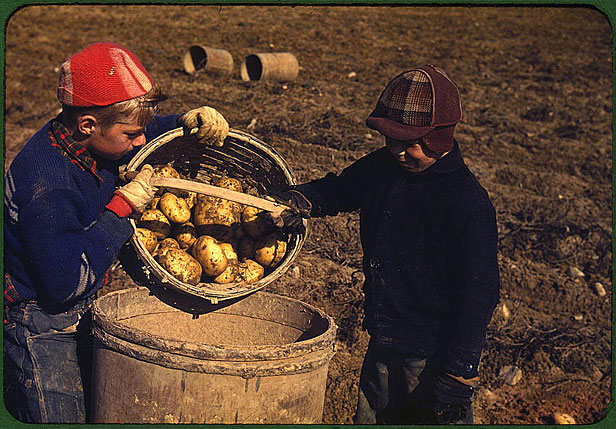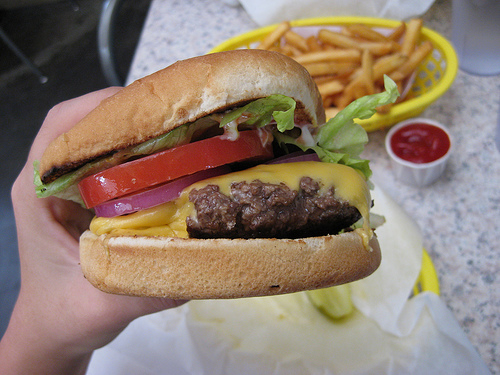The Denver Post‘s plog (photo blog) recently published some 70 photos dating from 1939-1943, commissioned by the Farm Security Administration/Office of War Information. They belong to the Library of Congress and were part of an exhibit called Bound for Glory: America in Color.
You’re probably familiar with the iconic black-and-white images of farmworkers by Dorothea Lange and others, but these pictures land a new, walloping punch — because they are in color. The first modern color film wasn’t introduced until 1935 and was not widely used until some years later, making these slides a rare color record of the effects of the Depression on America’s rural and small-town residents.
And the images are somehow shocking in their intimacy in a way that their counterparts in black and white, because of the historical distance it imposes (at least for me), are not. Here are six depicting food, farming, or energy.
 (Jack Delano/Prints and Photographs Division, Library of Congress)
(Jack Delano/Prints and Photographs Division, Library of Congress)
Children gathering potatoes on a large farm in Aroostock County, Maine, in 1940. (Child labor was not federally regulated until 1938, and farms fought for and gained exceptions to most of the age and payment rules.)
 (Russell Lee/Prints and Photographs Division, Library of Congress)
(Russell Lee/Prints and Photographs Division, Library of Congress)
A family eating dinner in their dugout in the wonderfully named Pie Town, New Mexico, circa October 1940. Note how small their dinner plates are.
 (Jack Delano/Prints and Photographs Division, Library of Congress)
(Jack Delano/Prints and Photographs Division, Library of Congress)
Workers chopping cotton on rented land near White Plains, Georgia, June 1941.
 (John Vachon/Prints and Photographs Division, Library of Congress)
(John Vachon/Prints and Photographs Division, Library of Congress)
America’s railway system made it possible for the Grand Grocery Company in Lincoln, Nebraska, to sell citrus from Florida and California.
 (Marion Post Wolcott/Prints and Photographs Division, Library of Congress)
(Marion Post Wolcott/Prints and Photographs Division, Library of Congress)
Planting corn along a river in Northeastern Tennessee, May 1940. Modern farms are constrained from planting so close to a waterway because of concerns about fertilizer runoff.
 (Arthur Siegel/Prints and Photographs Division, Library of Congress)
(Arthur Siegel/Prints and Photographs Division, Library of Congress)
The Great Lakes Steel Corporation’s stockpile of coal and iron ore and the Hanna furnaces of Detroit, Michigan, November 1942.



